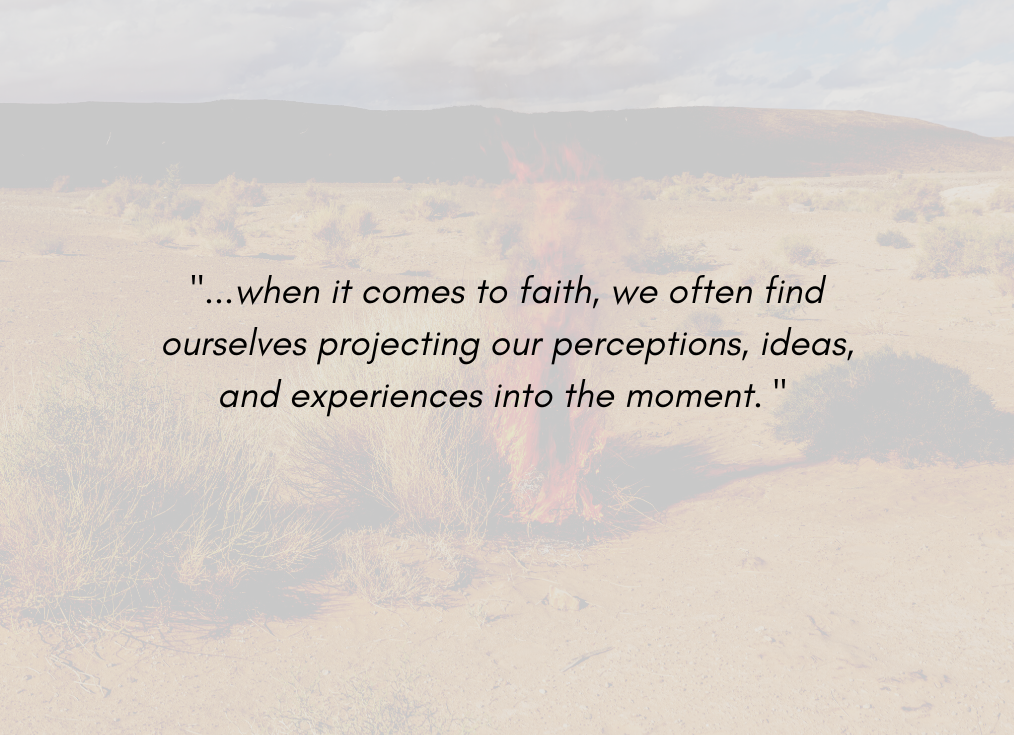I am that I am

January 13, 2023 / 20 Tevet 5783
We begin reading the second book of the Torah this week, parashah Shemot, which is the Torah portion that introduces us to our greatest prophet, Moses, and provides us with a fascinating insight into his journey toward faith.
Because Moses was born in an era when Hebrew boys were being slaughtered at birth, his family’s only option to save his life was to devise a way to have him be adopted by an Egyptian family. Today we are privy to how this story ends, knowing that not only was Moses saved by an Egyptian but that this Egyptian happened to be the daughter of Pharaoh. However, what we know nothing about is Moses’s experiences during his childhood because, in two short verses, Exodus 2:10-11, Moses goes from being a suckling infant to being all grown up.
At this point in the story, Moses kills an Egyptian taskmaster to save a Hebrew slave; then intervenes amongst two fighting Hebrews who report to him that they know about his previous deathly blow, which then sends Moses into a panic for his life fleeing Egypt where he finally comes to the rescue of a group of sisters trying to water their flocks. Moses marries one of the sisters, Zipporah, and has a son, Gershon. And now the stage is set for the famous burning bush scene.
…
Although I recommend personally reading Exodus 3:1-4:17 to get the full experience of this encounter, the gist of Moses’s dialogue with Gd is a combination of personal doubt, fear, and a seeming lack of faith. It’s hard to imagine at what point any of us today would transition from skeptic to believer. Would it be at the sight of a burning bush not being consumed? What about when a voice projects from the bush personally calling you by name? How about being forecasted on how the future is about to unfold? Or, maybe you need a physical miracle to convince you of Gd’s presence, like a staff turning into a snake, or one’s hand becoming inflicted with leprosy only to be immediately healed once again?
One particularly fascinating moment in the dialogue between Gd and Moses is when Moses asks Gd, “When they ask me, ‘What is Gd’s name?’ What should I tell them?” (3:14), upon which, Gd replies, “Ehyeh-Asher-Ehyeh” (I am that I am).
You see, when it comes to faith, we often find ourselves projecting our perceptions, ideas, and experiences into the moment. Sometimes we rationalize away what we know to be true, or we add in and see things that might not actually be present. When Gd shares with Moses the name he should tell the Hebrews, “I am that I am,” we see an amazing insight into what Gd knows about human nature… that we want or need to be convinced of Gd’s existence in order to have faith and belief. Our insight from this name is that Gd will exist whether we believe in Gd or not.
Generations of Jewish practice, through our most challenging times like our slavery in Egypt, the Spanish Inquisition, and more recently the Holocaust, to our best of times during the Great Temple eras, the rise of modern Israel, and other wonderful highlights, we have always had community. There is a reason we need a minyan to practice our faith.
Gd teaches us in this week’s Torah portion that Gd’s existence is not dependent on our faith in Gd. Rather, it is our relationships and our belief in one another, and specifically, in community, that brings about Gd’s Gdliness. “I am that I am,” Gd says to Moses, and yet, the real insight into Gd’s name is the challenge Moses hesitantly accepts to return to his people and unite them in their common purpose of becoming a united people so that they can be…
STRONGER TOGETHER.
Shabbat Shalom,

